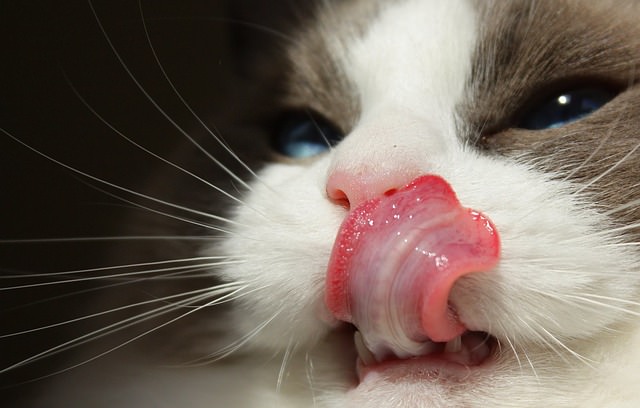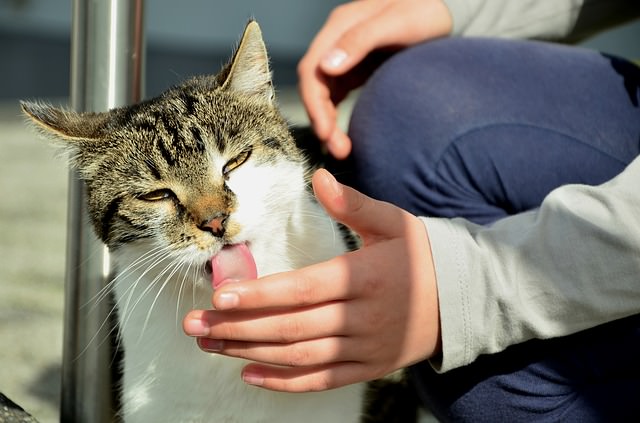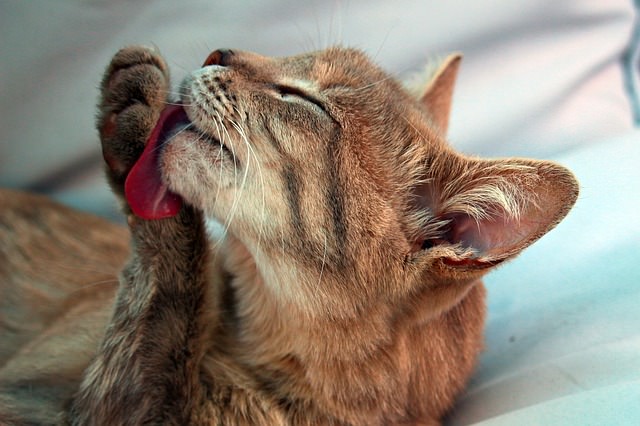Cats are fascinating creatures because we love to live with them, yet they still share many similarities with their wildcat cousins.
One of the physical traces of their ability to survive in the wilderness is the rough texture of their tongues.
If you’ve ever been licked by your cat (and, of course you have!) you’ve noticed that their tongue isn’t smooth like a dog’s – in fact, it feels like sandpaper!
That’s because their tongues are covered with tiny papillae, which are pointed and directed toward the back of the mouth, explains Vet Street.
These minuscule structures serve multiple purposes. For one, they enable your cat’s tongue to act like a comb as she grooms herself, brushing down hairs and loosening debris from her fur. The detangling also prevents mats, which can cause pain and immobility if they continue to knot. And as a story by Washington Post points out, “Those licks remove fleas and dirt, spread body oils and improve circulation.”
Secondly, Vet Street explains that the pointy papillae may help cats scrape meat from the bones of their prey, like a tiny paring tool. A feline’s amazing genetics are proof that they are meant to be survivors!
But because of their unique features, cat parents should be aware of the dangers that domestic life can pose. Soft materials can get stuck on the “hooks” of your cat’s tongue, so never let your kitty play with string or yarn unsupervised. If the fibers get caught on the papillae as your cat tries to swallow it, he could choke. Luckily, with a little precaution, accidents like this can be easily avoided.
Knowledge is power, and our kitties never cease to amaze us! Who knew that those rough tongues are actually multi-purpose survival tools?!
(h/t: Washington Post & Vet Street)




